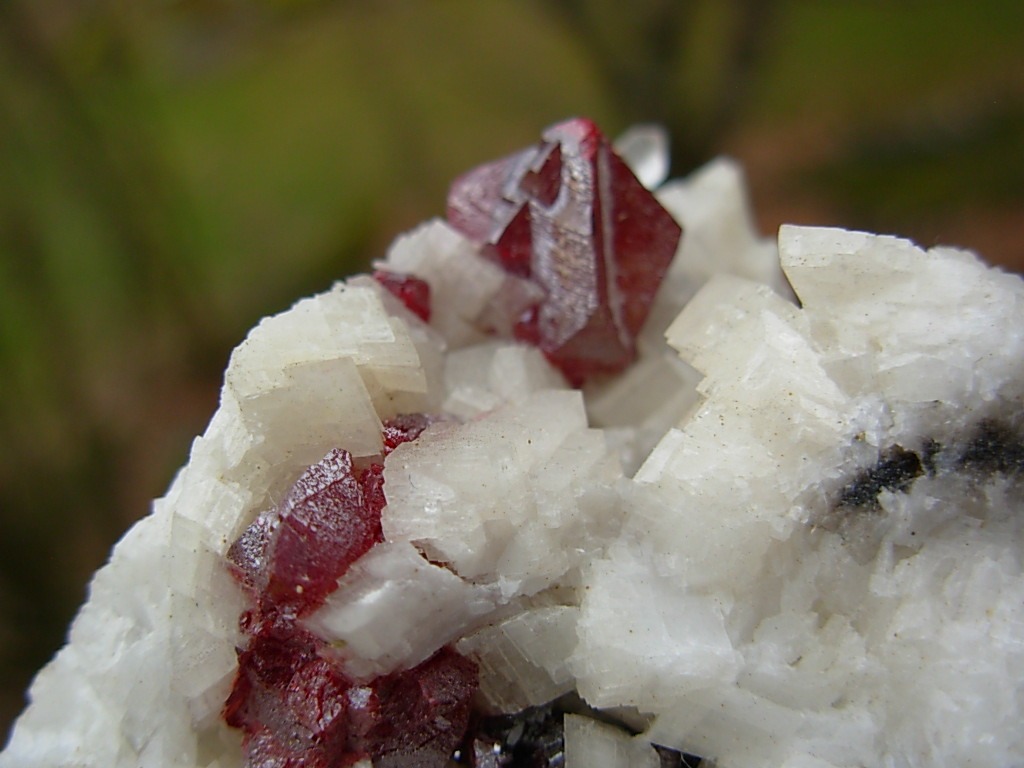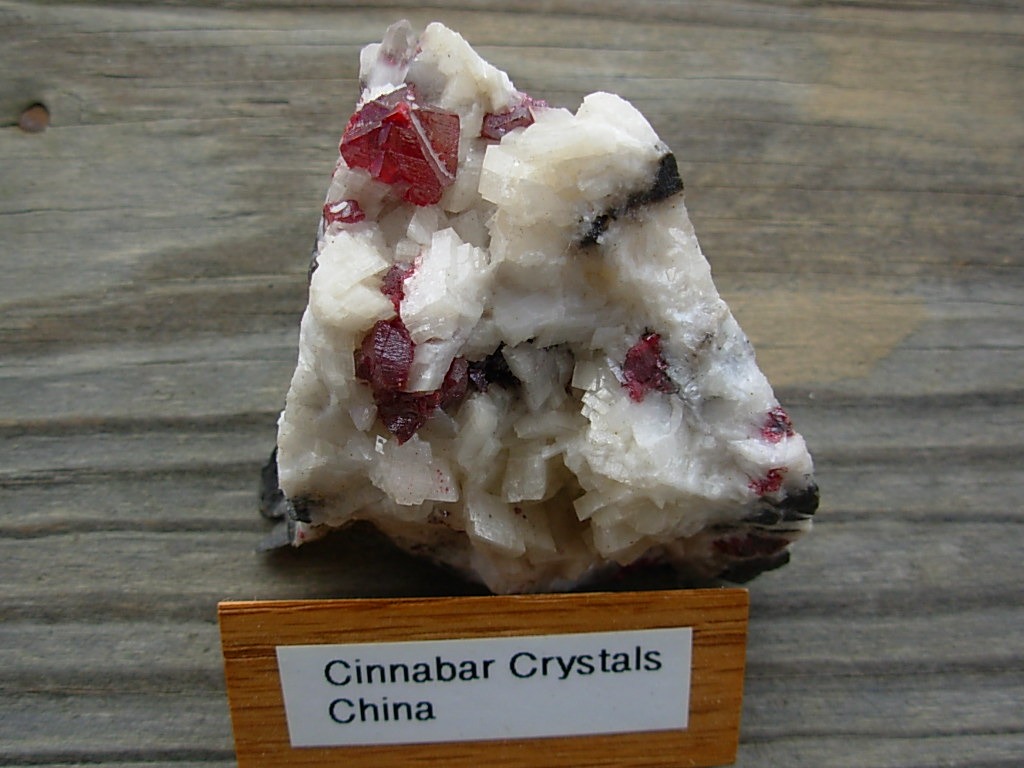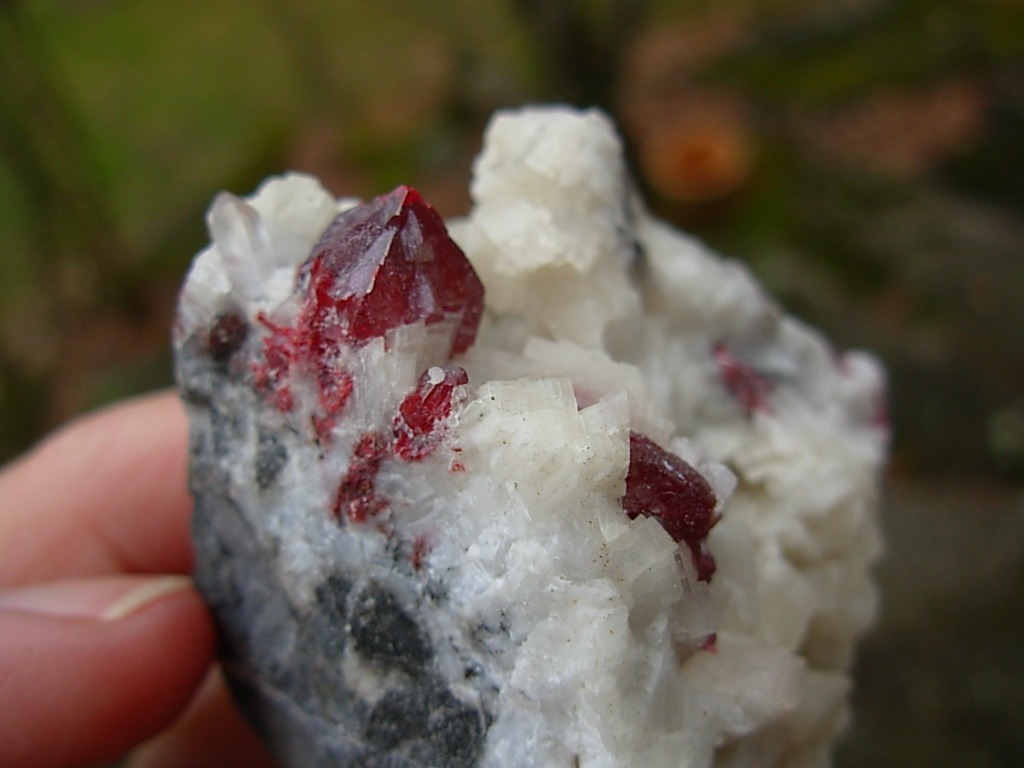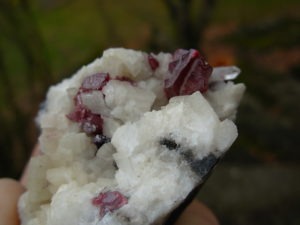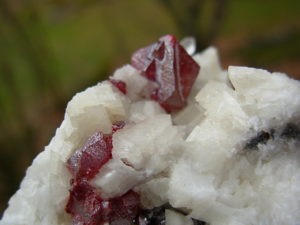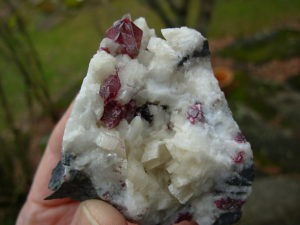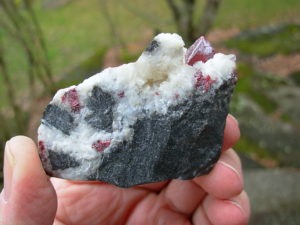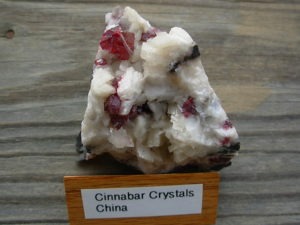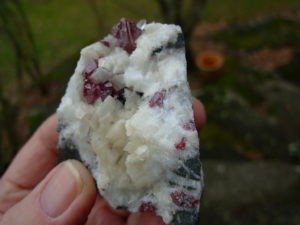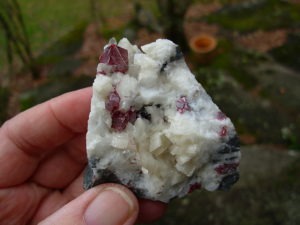Cinnabar
Cinnabar refers to the common bright scarlet to brick-red form of mercury(II) sulfide, which is a chemical compound composed of the chemical elements mercury and sulfur. It is virtually insoluble in water. It is the most common source ore for refining elemental mercury, and is the historic source for the brilliant red or scarlet pigment termed vermilion and associated red mercury pigments.
Cinnabar generally occurs as a vein-filling mineral associated with recent volcanic activity and alkaline hot springs. Structurally, cinnabar belongs to the trigonal crystal system. It occurs as thick tabular or slender prismatic crystals or as granular to massive incrustations. Crystal twinning occurs as simple contact twins. Associated modern precautions for use and handling of cinnabar arise from the toxicity of the mercury component, which was recognized as early as ancient Rome.
Notable Occurances include Almaden, Spain; Idria, Serbia; Hunan Prov., China and California, Oregon, Texas, and Arkansas, USA. The finest Cinnabar crystals in the form of intensely-red bright transparent crystals come from China at Tongren, Guizhou Province. Aesthetic crystals of Cinnabar, especially those from China, are very popular among mineral collectors. Cinnabar has been historically used as a vermilion pigment.
Cinnabar has been used for its color since antiquity in the Near East, including as a rouge-type cosmetic, in the New World since the Olmec culture, and in China since as early as the Song dynasty, where it was used in coloring lacquerware.
Item # 1CINN01173882
Beautiful Cranberry Cinnabar Crystals in matrix from China

Here's an excellent multi crystal formation of Cinnabar Crystals on a quartz, calcite and dolomite matrix from a mine located in Hunan, China. This specimen was procured in 1998 from a rock shop in Fallon, Nevada. Top Crystal has small chip, but a very asthetic specimen of Cinnabar Crystals.
specimen weighs 4.5 oz or 0.28 lbs (129g) and measures 2.3 x 1.9 x 1.7 inches (5.9 x 4.9 x 4.5cm)

